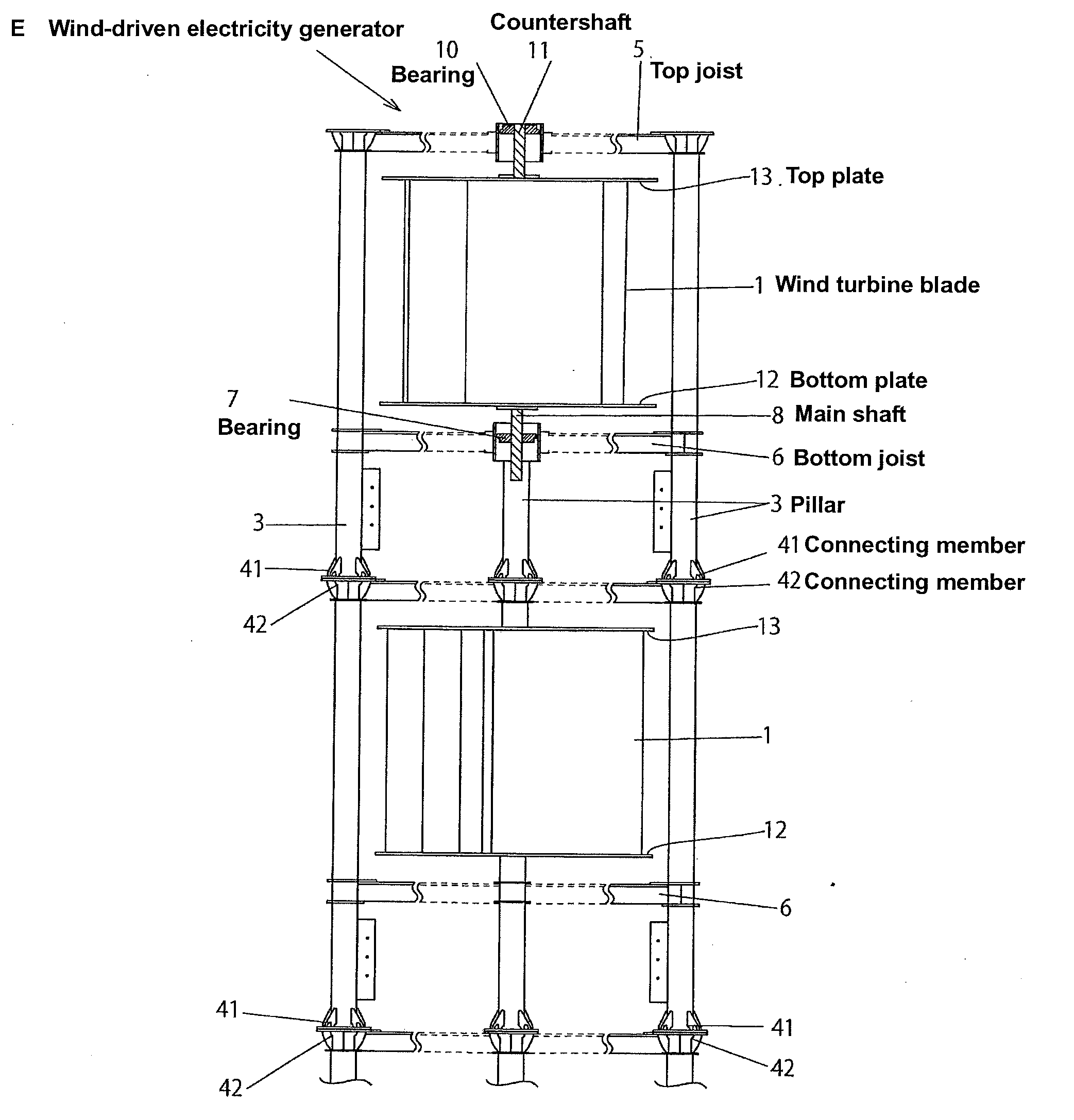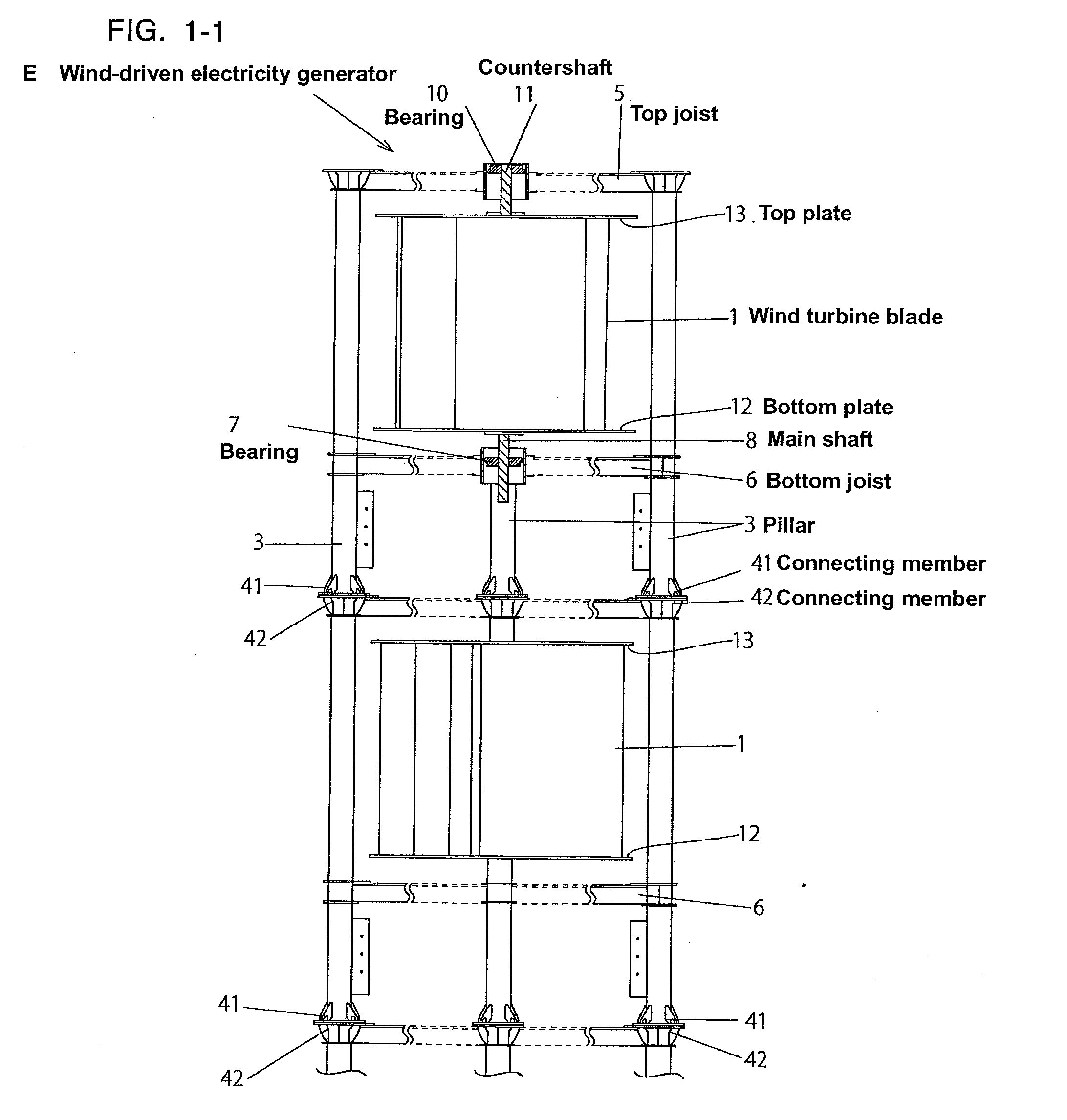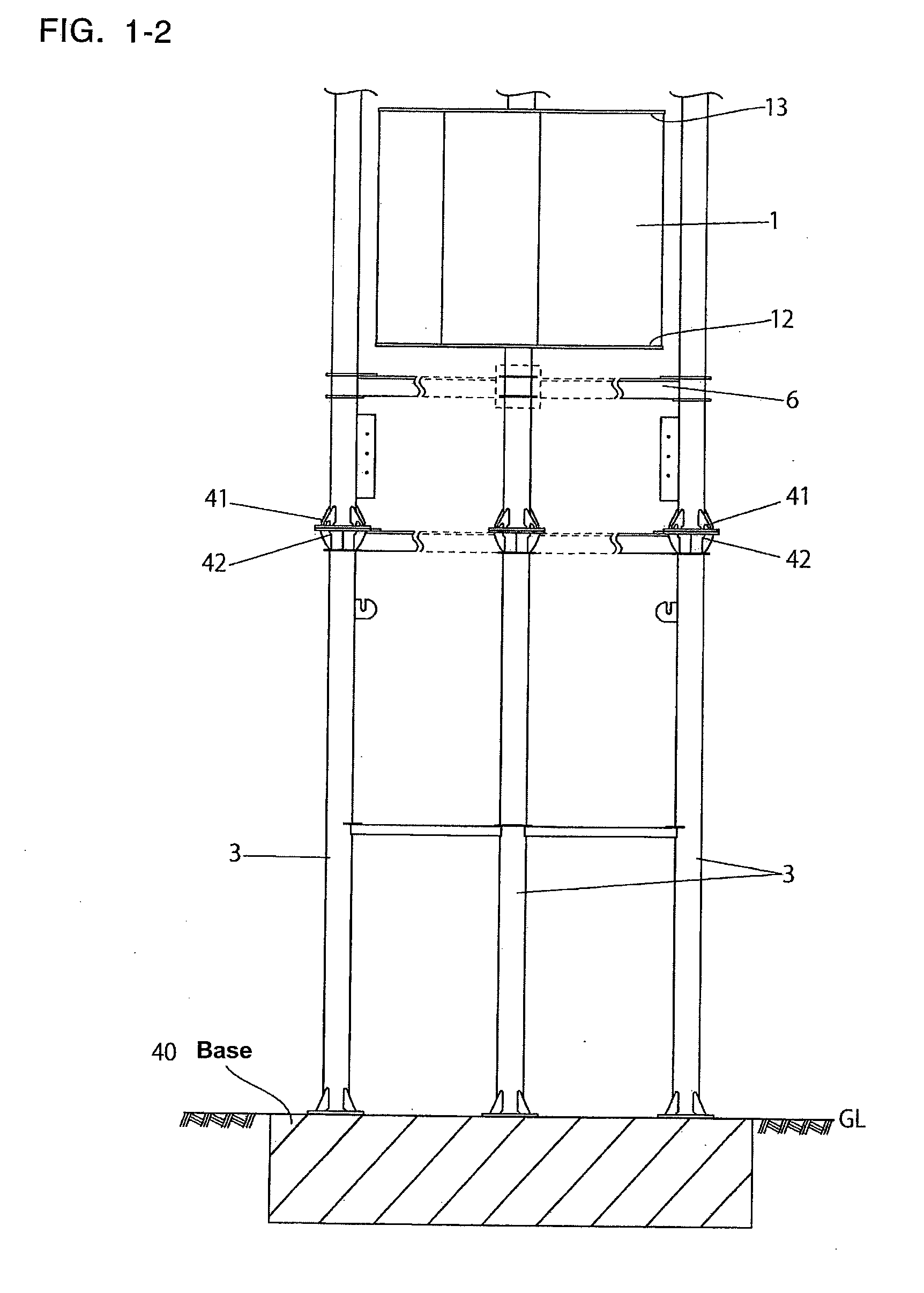Drag-type wind turbine for wind-driven electricity generators and wind-driven electricity generators using drag-type wind turbine
a technology of wind turbines and wind turbine blades, which is applied in the direction of wind motors with perpendicular air flow, non-positive displacement fluid engines, liquid fuel engine components, etc., can solve the problems of not always getting enough wind, emitted noise and low-frequency waves, and a risk to human health, so as to improve the efficiency of wind power and efficient wind streaming
- Summary
- Abstract
- Description
- Claims
- Application Information
AI Technical Summary
Benefits of technology
Problems solved by technology
Method used
Image
Examples
Embodiment Construction
[0067]The preferred embodiments of the invention are described below.
[0068]Firstly, (referring to FIG. 6) the overall structure of wind turbine blades 1 that are commonly used for the embodiments in this invention is that end surface X of each blade is fin-shaped (comma-shaped) C and longitudinal direction Y is of plate D like a horizontal blade on an excavator. The preferred outer structure of turbine blades 1 is described below.
[0069]Wind turbine blade 1 integrally comprises wind receiving side 1a of concave shape, wind streaming side 1b of convex shape located behind wind receiving side 1a, base end 1a1 of wind receiving side 1a, base end 1b1 of wind streaming side 1b, and connecting side 1c. The preferred structure, combining wind receiving side 1a, wind streaming side 1b and connecting side c is described below.
[0070]Wind receiving side 1a integrally comprises base section 100 located near blade core 1d and straightly extending in parabolic direction Z and slanting upward, and ...
PUM
 Login to View More
Login to View More Abstract
Description
Claims
Application Information
 Login to View More
Login to View More - R&D
- Intellectual Property
- Life Sciences
- Materials
- Tech Scout
- Unparalleled Data Quality
- Higher Quality Content
- 60% Fewer Hallucinations
Browse by: Latest US Patents, China's latest patents, Technical Efficacy Thesaurus, Application Domain, Technology Topic, Popular Technical Reports.
© 2025 PatSnap. All rights reserved.Legal|Privacy policy|Modern Slavery Act Transparency Statement|Sitemap|About US| Contact US: help@patsnap.com



